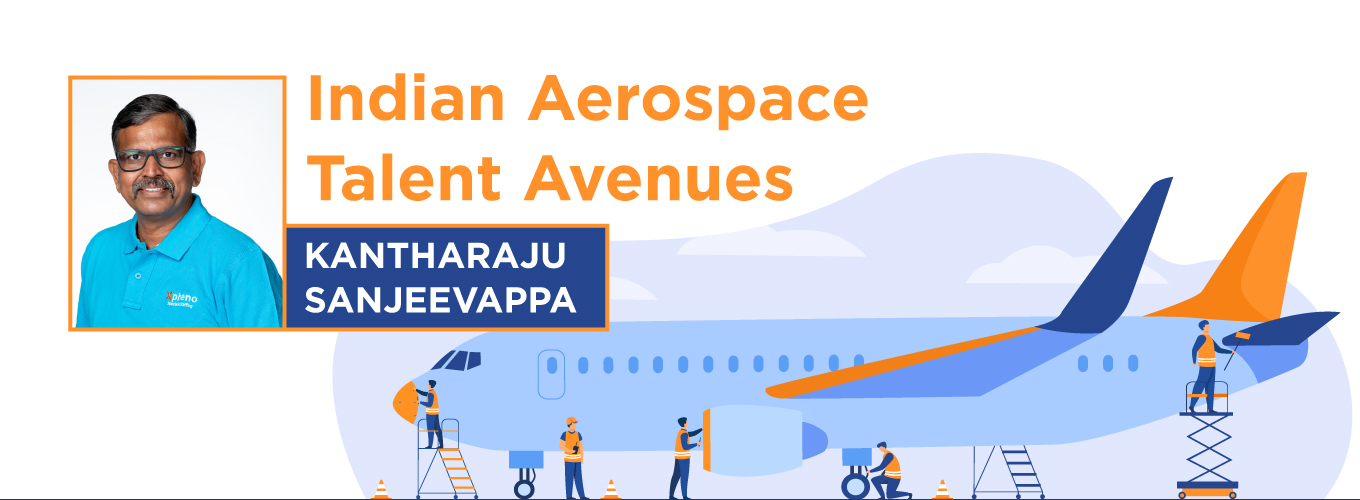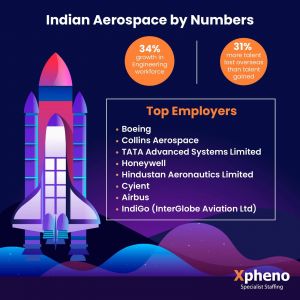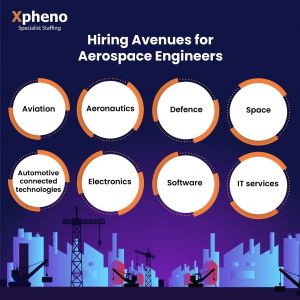Indian Aerospace Talent Avenues
The Indian Aerospace sector has been abuzz with the recent developments in India’s Space Mission and aviation programs. India’s space sector is worth about ₹6,700 crore ($8.4 billion), making up 2% of the global space economy.
Looking ahead, IN-SPACe predicts that by 2033, India’s space-tech market could hit ₹35,200 crore ($44 billion), claiming an 8% slice of the global pie. Besides, APAC’s aviation boom is propelling India’s aerospace industry to new heights.
With the growing middle-class demand for air travel for tourism and business, the Indian airline industry is further set to grow for regional connectivity and faster transportation.
Needless to say, the demand for talent in the aerospace industry is set to increase.
How is India faring with the supply of professionals? And what are the major trends in hiring aerospace talent? Let’s delve into the talent landscape of the Indian Aerospace sector in this post.
Global Aerospace Scenario and Indian Aerospace Sector
According to the International Air Transport Association (IATA), 43% of global air travel is happening in the APAC region. APAC will be a hungry market for aerospace solutions in the coming years. This presents a golden opportunity for India:
- Increased demand: As air travel surges across APAC, the need for aircraft, components manufacturing, engineering, testing and maintenance services will skyrocket. This translates to a massive market for Indian aerospace companies to tap into.
- Manufacturing hub: India’s burgeoning aerospace manufacturing capabilities, coupled with its cost-competitive edge, can position it as a preferred supplier for APAC’s aviation needs.
- Skilled workforce: India’s vast pool of engineers and technicians can cater to the growing demand for skilled personnel in the APAC aviation industry. Companies like Airbus, Boeing, Lockheed Martin, Pratt and Whitney, Collins, and Safran have already set up their engineering centers in India, and they are actively looking for skilled professionals across functions.
Similar to what happened in the automobile components and small car industry, India has the potential to replicate this success in the aerospace sector and become a crucial player in the global supply chain for aerospace components and parts.
Leading global OEMs and numerous private companies have quickly established India as a preferred destination for manufacturing aerostructures, avionics, components, system design, sub-assemblies, and complex system assemblies. While the sector upholds international standards in component quality, there’s still a need for India to develop more facilities offering end-to-end aerospace solutions.
By capitalizing on its strengths and building strategic partnerships, India can become a major player in the global market, not just a supplier, but an innovation leader driving the future of aviation.
Demand and Supply of Talent in the Aerospace Industry:
India’s aerospace growth relies on a diverse team, ranging from pilots to handlers, all needing robust education and training. This impacts the whole aircraft lifecycle, from airlines and airports to suppliers and regulators. Without the right team, the path to soaring growth remains on the ground.
With private companies like Tata, Mahindra, L&T, and Godrej playing a significant role, the aerospace sector is witnessing a surge in demand for talent. These corporations, drawing on their engineering expertise from various domains, have successfully entered the aerospace industry. They are involved in producing a range of components, from actuators and valves to airframes, structures, landing gear, and helicopter components.
This expansion creates a demand for engineers and skilled labor throughout the aircraft lifecycle, from design to the first flight and ongoing maintenance. Additionally, there’s a growing need for aircraft mechanics and technicians capable of overhauling and repairing aircraft, as well as testing various systems like radio frequency, vibration, and electrical circuitry and control systems.
Job Avenues for Aerospace Talent:
Job avenues and talent demand has grown substantially. Aerospace talent find opportunities in diverse sectors.
Notably, half of the aerospace engineering graduates are absorbed by the aerospace and related industries. The increase in demand is happening across functions. However, the engineering and research skills continue to have greater demand.
The top job roles available for talent in the aerospace engineering industry, in particular, are:
- Systems Engineer
- Design Engineer
- Satellite Engineer
- Payload Specialist
- Ground Support Engineer
- GNC Engineer
- Space Scientist
- Astrophysicist
- Space Policy Analyst
- Mission Control Specialist
The supply side is also gradually getting better. As per our research, the active talent pool of experienced aerospace engineers has seen a growth of 30 percent over the last 12 months.
Over the last five years, over 18,000 fresh graduates have entered the field of Aerospace Engineering in India, marking a 26% growth in enrollment. Nevertheless, there’s a growing demand for training programs to introduce new processes and technologies for professionals in manufacturing, R&D, and engineering roles within the aerospace industry.
Indian aerospace talent has also been experiencing the “brain drain” phenomenon, where India loses more Aerospace talent overseas compared to what it absorbs. The United States, United Kingdom, and Germany are top countries attracting Indian professionals into the Aerospace Industry.
How do we Cultivate India’s Aerospace Talent?
India’s ambitious aerospace sector rests on a critical force – its people. It requires qualified personnel in various roles—pilots, cabin crew, engineers, air traffic controllers, and more. However, building a robust aerospace talent pool demands upskilling our workforce based on the rapidly evolving industry demands.
India has an abundant talent pool of fresh graduates and experienced professionals. However, as with other sub-sectors of manufacturing, the aerospace sector is struggling to attract young talent and retain existing workers.
Enterprises are looking for candidates who are updated with the latest technological breakthroughs, evolving commercial landscapes and dynamic regulatory shifts. They are building strategies to cultivate and develop talent internally. That, coupled with collaborations with schools, community organizations, and public agencies can help establish a robust talent pipeline for aerospace companies.
Private universities are also enhancing their aerospace programs by incorporating internships, forming partnerships with private firms, and revamping elective courses.
To counter the brain-drain phenomena, we must highlight India’s role in global space missions and aviation programs to incumbent Indian aerospace talent. Moreover, offer them competitive perks, growth opportunities, and international collaborations to make India’s aerospace sector the launchpad for the world’s best minds.












